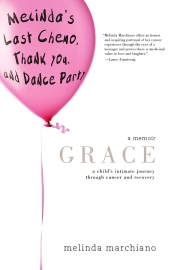It is my honor to feature this blog post by Judith Hannan, author of Motherhood Exaggerated and The Write Prescription: Telling Your Story to Live With and Beyond Illness.
Recently, I participated in a Narrative Medicine workshop at Columbia University. This mini-version of the groundbreaking Masters in Narrative Medicine program created by Dr. Rita Charon posits that the literary arts—close reading, close listening, and writing—are a necessary adjunct to the medical arts to ensure compassionate, ethical, and high quality health care. Academics spoke about gathering and interpreting patient narratives, doctors led us in analyzing stories, and writers and film specialists examined work depicting the intersection of life and medicine. Missing was the voice of the patient unfiltered through the view of the doctor, professor, or writer.
I felt this absence again in Andrew Solomon’s otherwise excellent article in the April 26, 2016 issue of The Guardian. The title of his piece is “Literature about medicine may be all that can save us: A new generation of doctor writers is investigating the mysteries of the medical profession, exploring the vital intersection between science and art.” Is Solomon saying that only narratives by doctors have a place within the practice of medicine? And who is us? Is it medical professionals, patients, the general population? Are patient narratives being co-opted by the very people trying so hard to bring dimensionality to the people they are healing?
I am not a medical professional. I am a writer and teacher who focuses on stories of physical or mental illness from the point-of-view of the patient, caregiver, or family member. Writing my memoir, Motherhood Exaggerated, is what allowed me to understand how I had become transformed as a mother during my then eight-year-old daughter’s treatment for cancer and her early years of survival. For readers, the book gave them permission to tell their own stories. They brought me their tales like presents which heretofore had no one to unwrap them. It was then that I realized that the field of narrative medicine either had to expand to include the patient/caregiver voice or we need to create a new field—maybe narrative healing—not just to embrace but to elevate the value of these stories.
In a June 29, 2010 New York Times article, Dr. Abigail Zuger asked whether memoirs of illness should be held to the same standard as other writing. “Perhaps,” she said, “these books serve a different purpose from the usual book for the writer and the reader.” My second book, The Write Prescription: Telling Your Story to Live With and Beyond Illness, is a response to Zuger’s question. Personal reflection and intimate prompts help writers enter into their stories where they will find healing, not by moving on from the trauma that has occurred in their lives, but by discovering how to move with it. Unlike Zuger, though, I think all writers should tell their stories well, not for the purposes of publication or to attract more readers, but because better writing will result in greater insight and transformation. It is the difference between a recitation of what happened and placing those events within the larger context of a life, between cliché and a unique voice, between venting and discovering, between momentary catharsis and more lasting change.
Aspiring toward literary excellence will mean that the genre of illness narrative will broaden in appeal. Like any good book, the reader will both find a piece of him or herself as well as acquire a larger view of what it means to be human. And it will give control to the person whose story it is to tell. In “Fraying at the Edges,” (New York Times, May 1, 2016) N.R. Kleinfield creates an exquisite portrait of Geri Taylor during the years immediately after her diagnosis of Alzheimer’s disease. As Taylor talks about how so many services emphasize the caregiver and the later stages of the disease, she expresses a similar desire for control. “We don’t want to be done to, we want to do.”
This is an important message for anyone in the healing profession. Yes, doctors should continue drawing out the stories of their patients’ lives, they should continue writing and sharing their own humanity. But patient narratives have their own place. Their readership should extend beyond those who have had similar experiences to include the general population as well as those within the medical field.
If you want to contribute toward the language of medicine, the best way to approach your story is in small bites; trying to tell everything at once is too daunting and will prevent you from looking closely. Receiving a diagnosis can make you feel like you are no longer the same person. To remain in touch with the entire range of who you are, bring all your senses into your writing. Be aware not only of what is happening to you and inside of you, but what is going on around you. Read what you have written aloud to yourself. Writing gives us that tiny bit of distance that allows us to confront emotions, events, and fears that we might flinch from if we were speaking. Reading what you have written will help you recognize the feelings and discovery you have made.
You don’t need a special place to write or, particularly when you are starting out, a large amount of time. Here is a prompt you can do in ten or fifteen minutes.
NAMING AN ILLNESS
My meditation teacher tells me that, whenever negative forces or thoughts arise, I should give them a name as a way of neutralizing them. It’s easier to talk to people than to feelings and talking can reduce the sting. Grief, for example, is an impenetrable block; Greta, though, is a woman with a soft voice, long hair shading her eyes, a slight limp; she is more comfortable in water than on land. I can lean into Greta to hear her speak, brush the hair from her eyes, take her hand and guide her to the rocking waters of the sea.
Anxiety is the character I meet most often. Her name is Sybil. She greets me with a stutter. I have known her for over forty years and she has changed. Her body is still made up of the same sharp angles. Her feet still pace as if they never need sleep, my heartbeat mirroring their uneven rhythm. She still takes me by the arm, whispers in my ear of things only her silver eyes can see. But it no longer takes as much strength for me to loosen her grip. Her hair, once black, spiky, and uncombed is now nearly white and contained by a headband. I used to Sibyl welcome; she loves a strong cup of Irish breakfast tea. These days I’m more inclined to stroke her long fingers, straightening and lengthening them before they can turn into claws.
Siddhartha Mukherjee, in The Emperor of All Maladies: A Biography of Cancer, says, “To name an illness is to describe a certain condition of suffering—a literary act before it becomes a medical one.” The true literary act, though, is in the renaming of the illness, to give it a moniker that is uniquely yours. It is a way to address your illness in familiar terms and to communicate with others in a form they can understand.
Writing Prompt
Write about your illness, or that of someone for whom you are caring, as if it were a person. Give it a name. What does it look like—height, hair and eye color, skin tone, clothes, hands? Describe its mannerisms, habits, and moods. Give it a voice. Talk to it. How, if at all, has naming your illness influenced your relationship to it?
—
 Judith Hannan is the author of Motherhood Exaggerated (CavanKerry Press, 2012), her memoir of discovery and transformation during her daughter’s cancer treatment and her transition into survival. Her essays have appeared in such publications as Woman’s Day, Opera News, The Huffington Post, The Healing Muse, ZYZZYVA, Twins Magazine, and The Martha’s Vineyard Gazette. She teaches writing about personal experience to homeless mothers and at-risk adolescents as well as to medical students, and is a judge of the annual essay contest sponsored by the Arnold P. Gold Foundation for Humanism-in-Medicine. She served as Director of Development of the 92nd Street Y and then for the Children’s Museum of Manhattan. She now serves on the board of the Museum, Jody Oberfelder Dance Projects, as well as on three boards affiliated with the Mt. Sinai Medical Center in New York—the Adolescent Health Center (where she now serves as President of the Advisory Board), the Children’s Center Foundation, and Global Health. She lives in New York.
Judith Hannan is the author of Motherhood Exaggerated (CavanKerry Press, 2012), her memoir of discovery and transformation during her daughter’s cancer treatment and her transition into survival. Her essays have appeared in such publications as Woman’s Day, Opera News, The Huffington Post, The Healing Muse, ZYZZYVA, Twins Magazine, and The Martha’s Vineyard Gazette. She teaches writing about personal experience to homeless mothers and at-risk adolescents as well as to medical students, and is a judge of the annual essay contest sponsored by the Arnold P. Gold Foundation for Humanism-in-Medicine. She served as Director of Development of the 92nd Street Y and then for the Children’s Museum of Manhattan. She now serves on the board of the Museum, Jody Oberfelder Dance Projects, as well as on three boards affiliated with the Mt. Sinai Medical Center in New York—the Adolescent Health Center (where she now serves as President of the Advisory Board), the Children’s Center Foundation, and Global Health. She lives in New York.

 Judith
Judith





